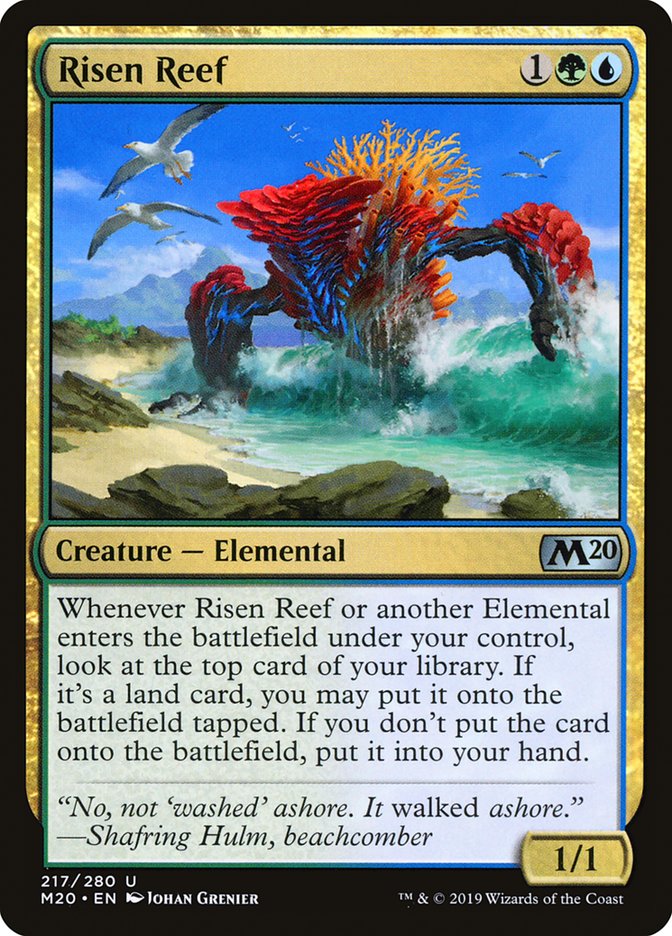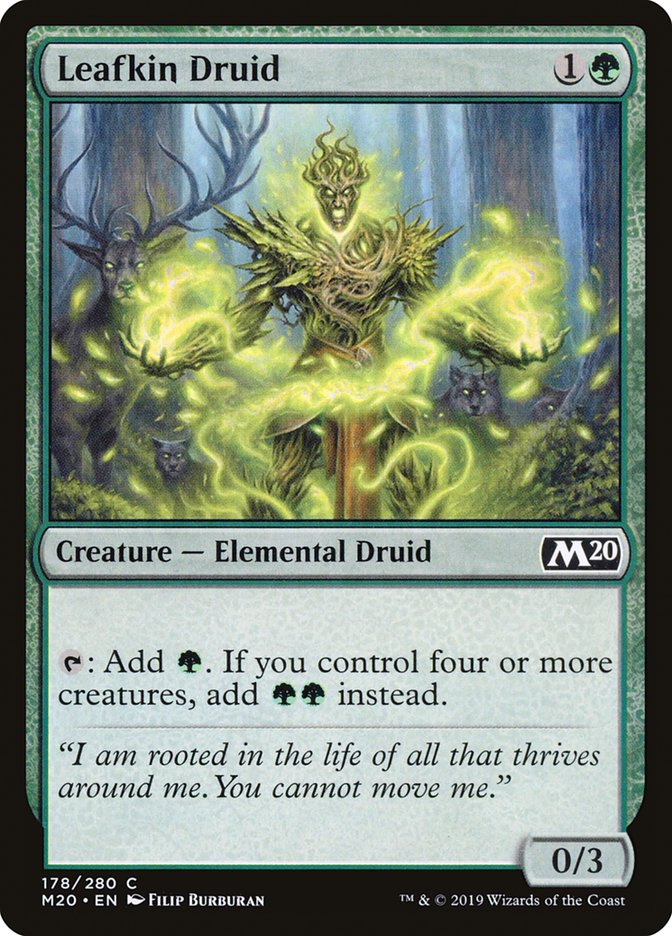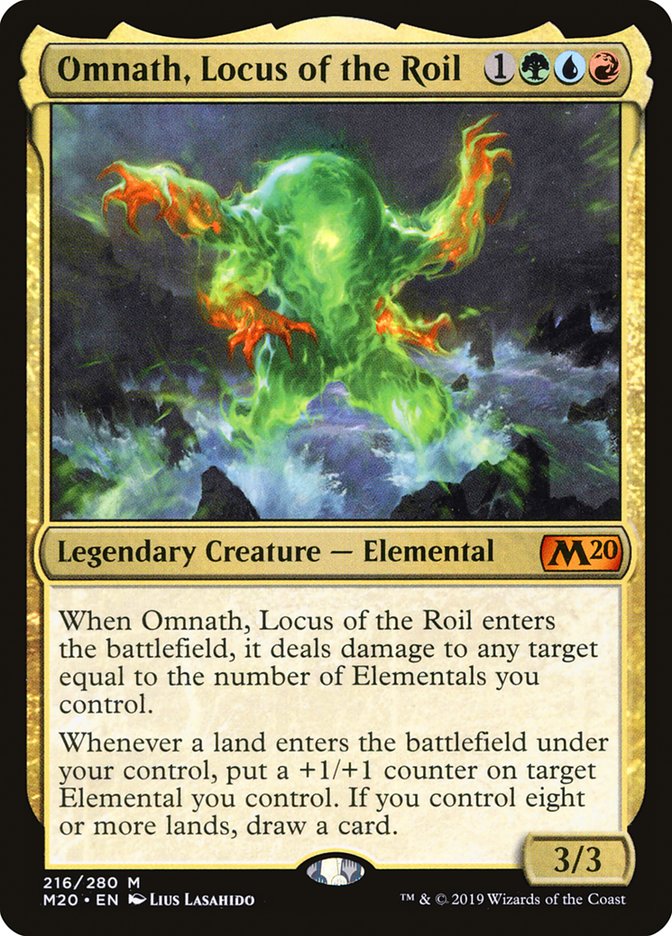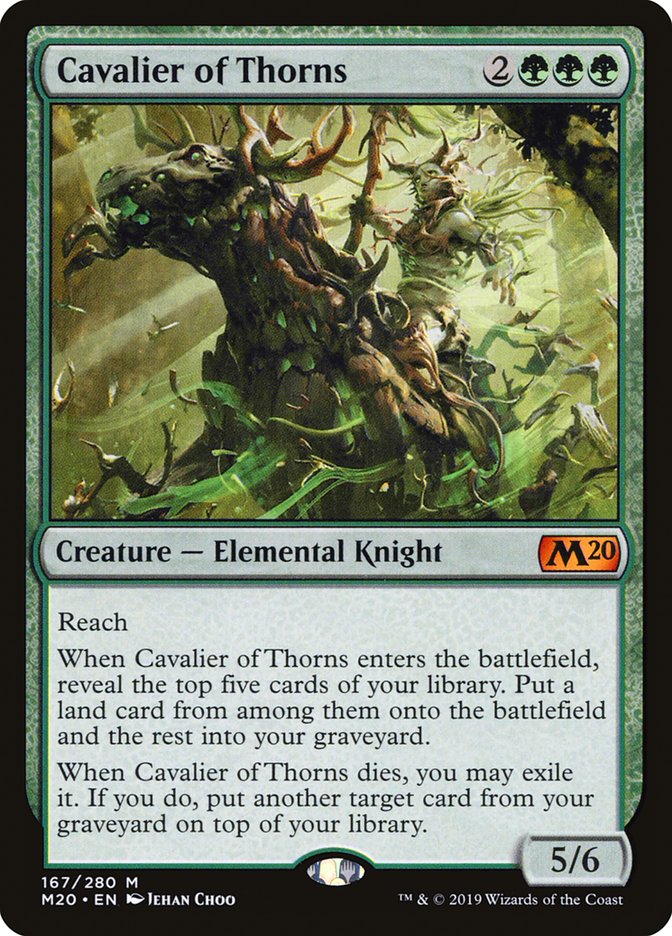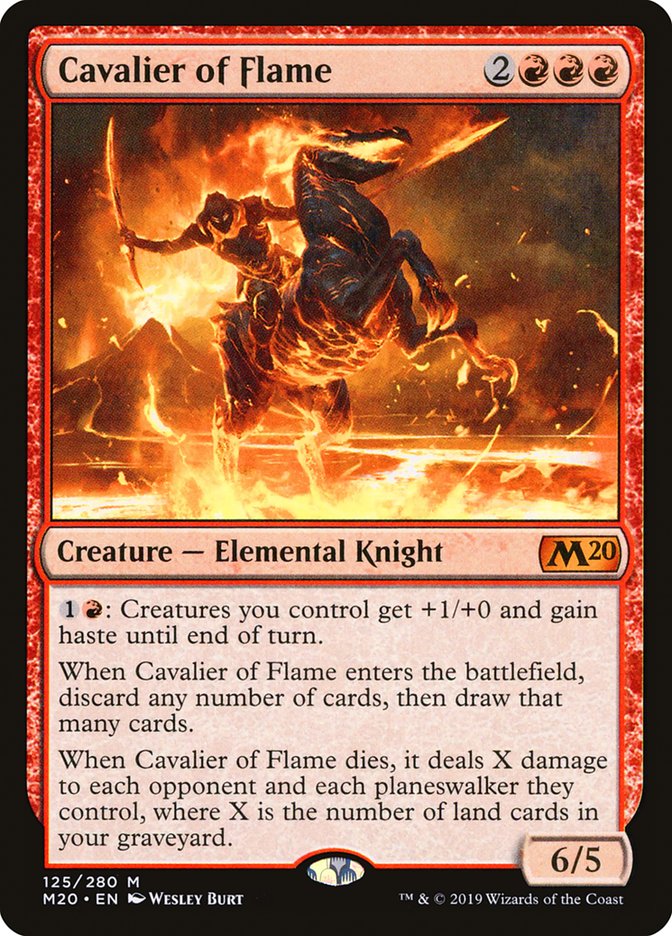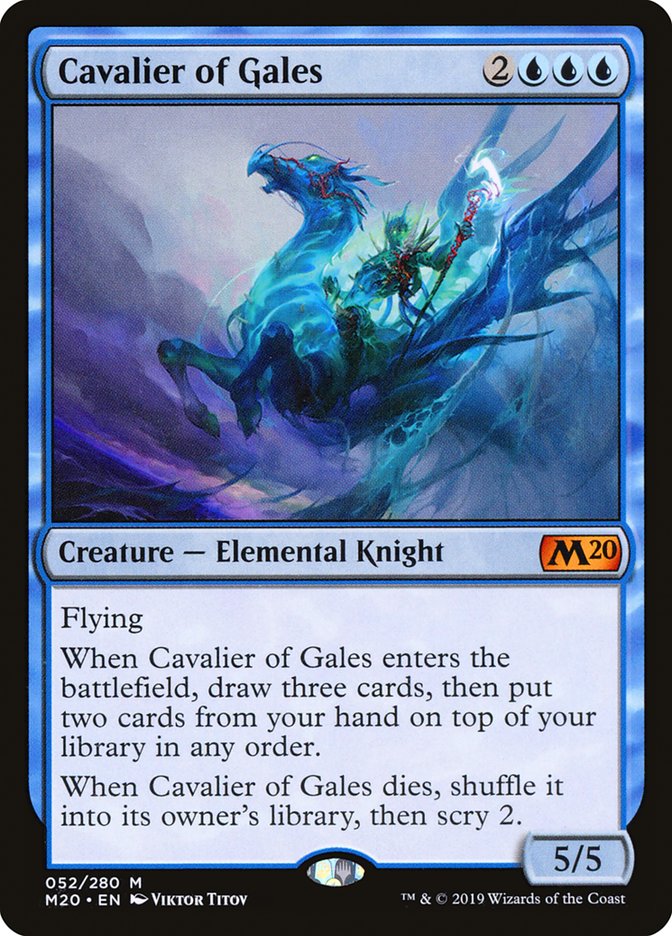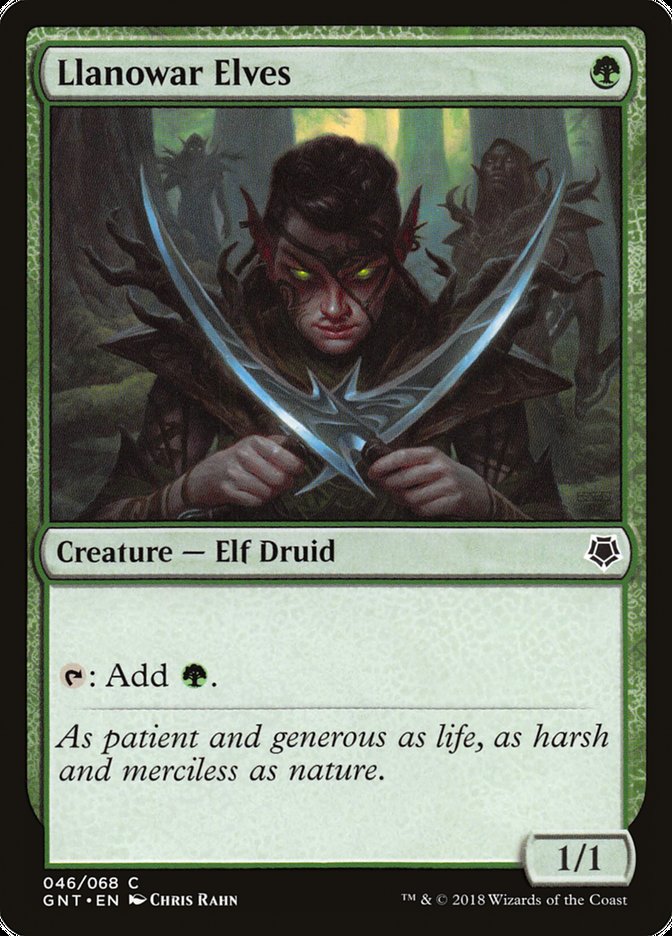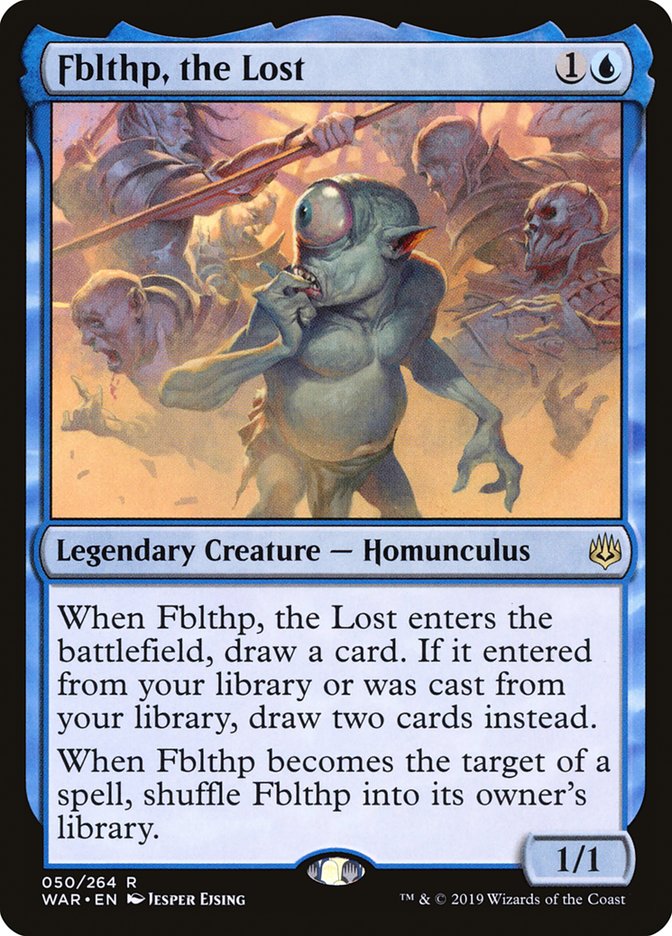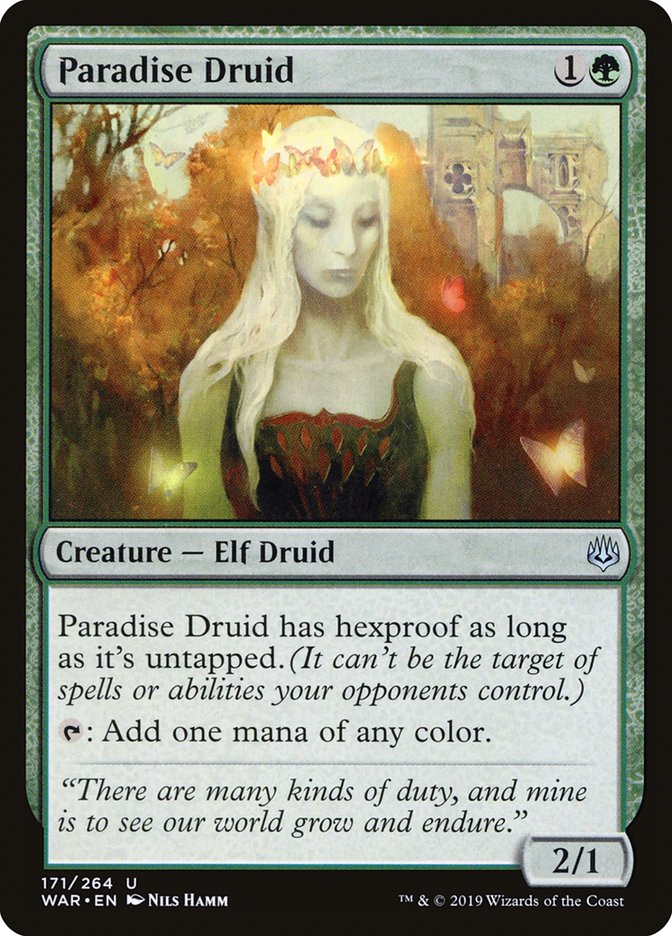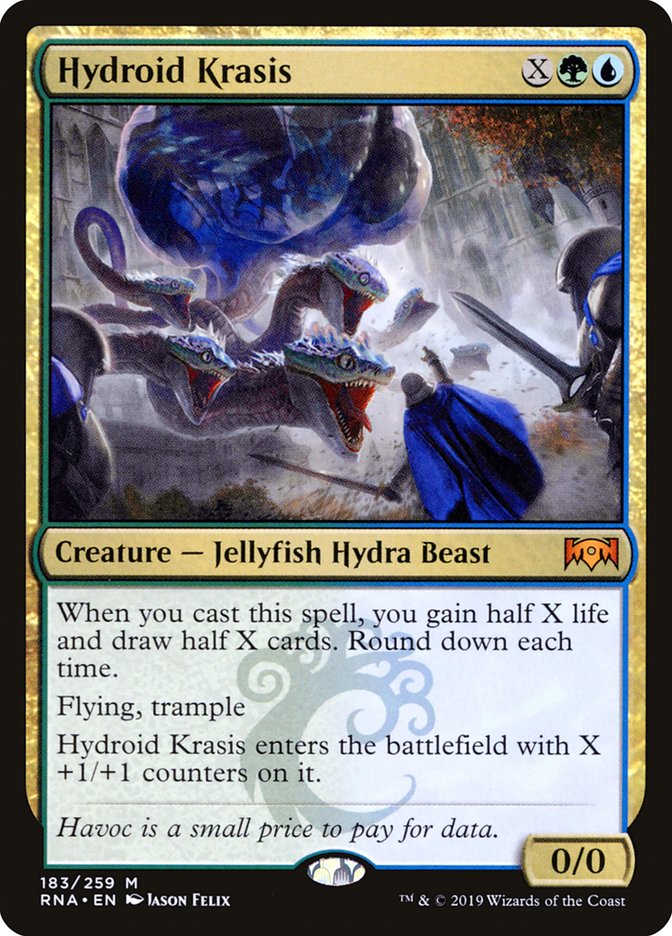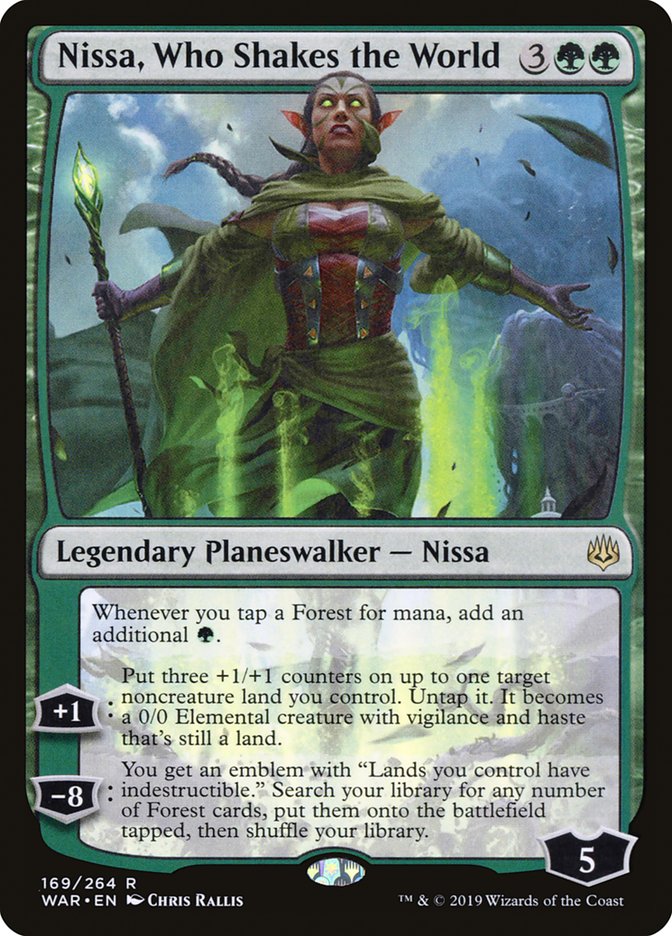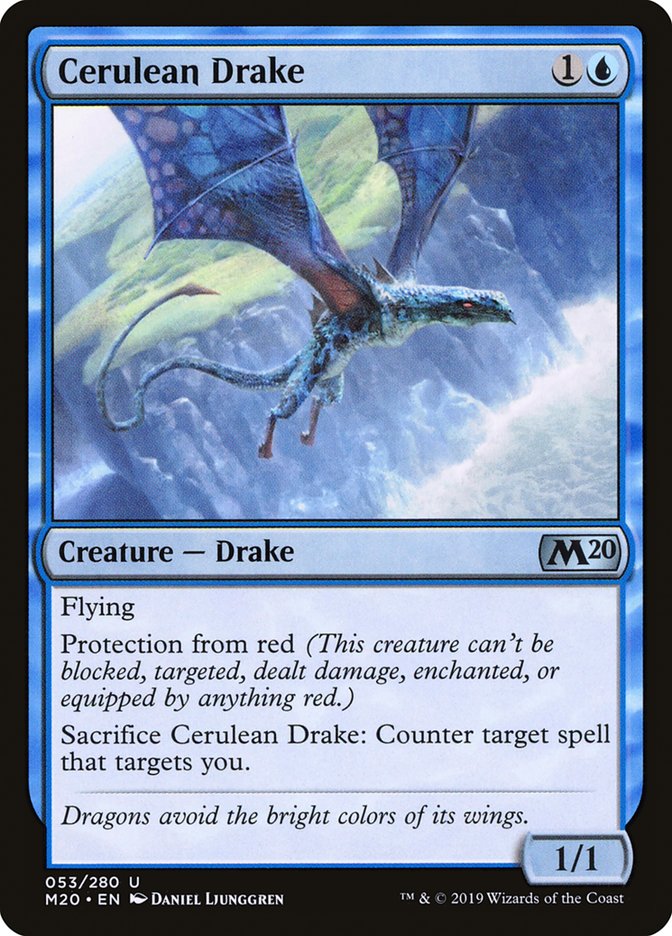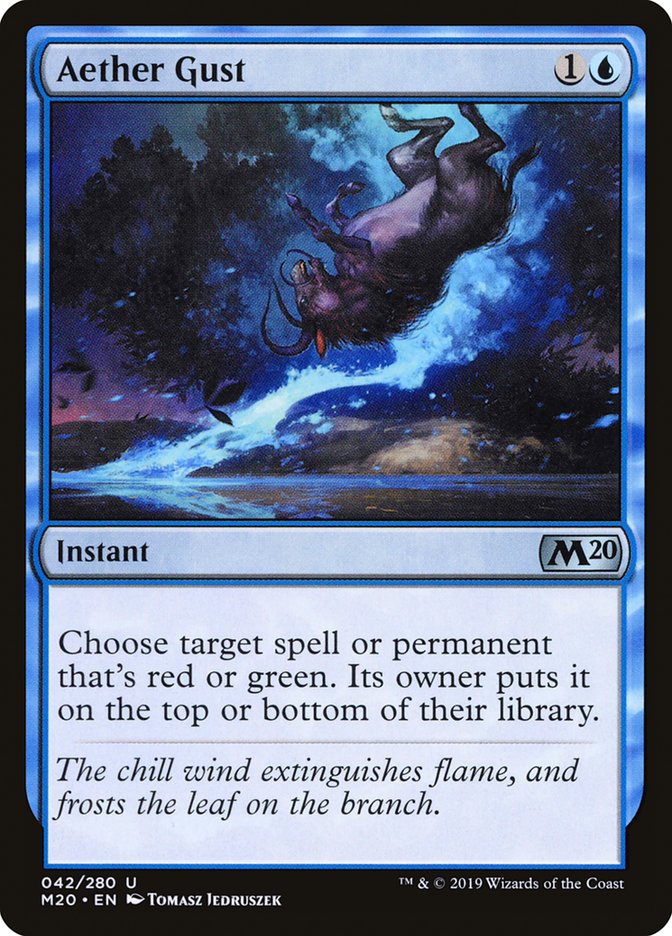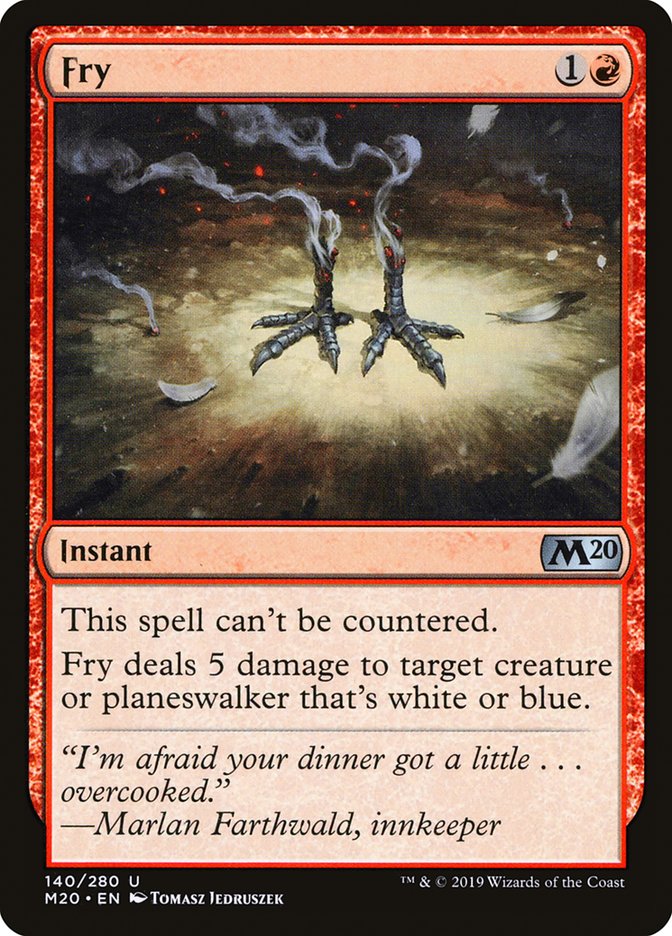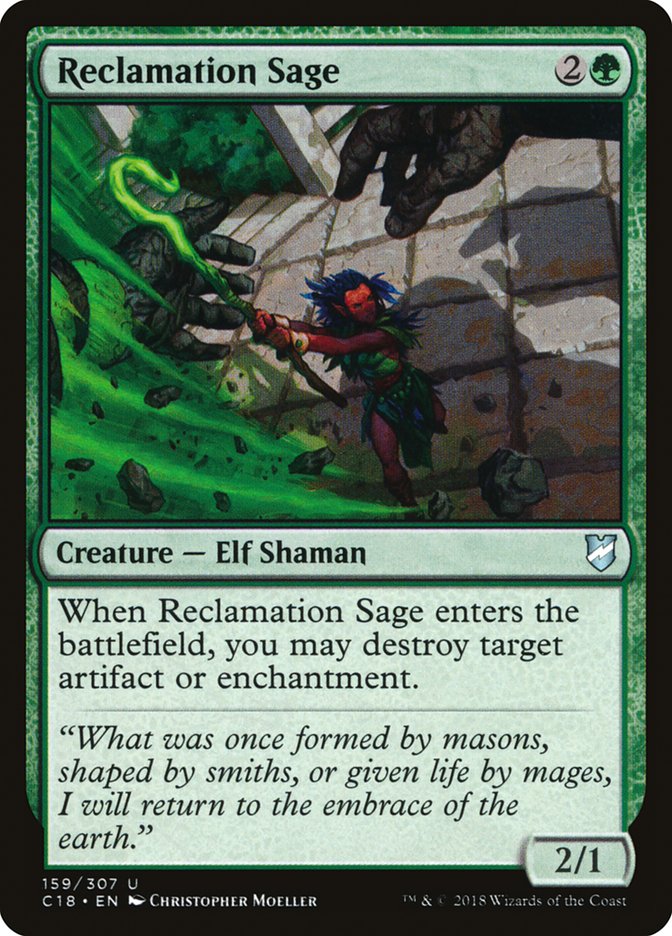I’ve had my eye on Neoform for the last week or so, and for good reason. In War of the Spark Standard, Neoform was lackluster because we just didn’t have an early creature worth grabbing, ultimately making the sacrifice part of Neoform too high a cost. At what point does the benefit of finding the right creature outweigh the cost of sacrificing a creature?
A lot of words have already been written about this beefed-up Coiling Oracle. For three mana, you get a 1/1 that either draws you a card or ramps you. Then, every Elemental you get afterward will draw you a card or ramp you. It might seem “just fine” on paper, but Risen Reef can really get out of control if your opponent doesn’t kill it immediately, which is pretty insane for a cheap creature that more or less says “draw a card.”
Normally a creature that requires a removal spell gets little to no value if your opponent hits it with removal. Risen Reef completely turns that on its head, and only for one more mana than we’re used to paying for such an effect. But what if we get to untap with it? How crazy can we actually go? I know Emma Handy was working on a variation featuring Runaway Steam-Kin, which looked pretty cool on paper, but what if we just went a super-fair route and tried to value our opponents out of the game?
Risen Reef is also bonkers in multiples, as every Elemental nets you two draws or extra land drops, which ultimately allows you to cast more Elementals, draw more cards, and ramp even more. Things can get out of hand rather quickly, and the cost is simply playing slightly less efficient threats at roughly the same casting costs. For example:
Leafkin Druid might not even be a worse version of the other two-mana ramp creatures. As you progress in the game, it generates two mana, and with three toughness, it acts as a decent blocker while also dodging both Shock and Cry of the Carnarium. Overall, the only downside between it and something like Paradise Druid is that it dies to most two-mana removal spells and doesn’t attack Narset in a pinch.
But it’s an Elemental, and we’re trying our best to push Risen Reef as much as we can. Of all the sacrifices we have to make on our curve to make Risen Reef good, you can do a lot worse than playing some number of Leafkin Druids. Luckily, it’s also a two-drop, which means we can flood our deck with them and not feel too bad about letting it go to Neoform.
I’ve been extremely impressed by Omnath, Locus of the Roil in my initial testing. And luckily, it’s another creature I’m more than happy to find with and sacrifice to Neoform! With Neoform, you desperately want powerful enters-the-battlefield abilities because those recoup what you’ve lost from the payment of Neoform. Omnath is a great find from Neoform, but it’s also a fine bridge to a slightly larger five-drop from Neoform, giving you a nice round curve that stops at five.
And what, might I ask, is sitting in the five-drop slot?
Of these three, Cavalier of Thorns is likely the easiest to cast. We’re playing a base-green deck, and we can really utilize that extra mana as the game goes late. Plus, if our opponent ever kills it, we get back Risen Reef or something similar.
The most powerful is likely Cavalier of Flames, since Neoform lets you activate the ability easily, giving Cavalier of Flames and the rest of your creatures a bit of a boost and haste. The trouble is figuring out how to build the mana correctly so you can actually cast Cavalier of Flame if you naturally draw it. With Neoform and Risen Reef early in the curve, and likely another blue creature somewhere along the way, you need to lean a bit blue, which means you’re probably not going to have enough red sources unless you load up on something like Unclaimed Territory. And if you’re playing Unclaimed Territory, that likely means you’re not playing any red spells that aren’t creatures. But we might be fine without it.
As for Cavalier of Gales, it’s likely the worst of the three in this particular deck, but it was quite good when I naturally drew it in testing, and relatively easy to cast as I had a solid blue slant on the spell base at the time. I think you need to pick two of these and call it a day, and my gut says Thorns and Flame.
Add all these element(al)s together, toss in a few creatures you wouldn’t mind sacrificing to Neoform, and maybe even throw in a Llanowar Elves or four, and you’ve got yourself a nice-looking Neoform deck!
Creatures (30)
- 4 Llanowar Elves
- 4 Hydroid Krasis
- 3 Paradise Druid
- 2 Fblthp, the Lost
- 1 Living Twister
- 1 Cavalier of Flame
- 4 Risen Reef
- 4 Omnath, Locus of the Roil
- 4 Leafkin Druid
- 2 Cavalier of Thorns
- 1 Scampering Scorcher
Planeswalkers (3)
Lands (23)

This iteration of Temur Elementals has a lot of good synergy going for it, but we can certainly turn the dial forward or back depending on how the metagame shapes up. If people are playing a ton of removal, we need to rely less on synergy and more on raw power. If people are just doing their own thing, we need to turn the dial forward and go super-hard on those powerful interactions. Right now, we’re at a healthy medium.
The Non-Elementals
Unfortunately, not every creature can be an Elemental, as we need a large amount of creatures to make Neoform work and those types of creatures require specific casting costs. But the ones we’ve chosen, we picked for good reason.
The best mana creature in Standard, Llanowar Elves helps you cast Risen Reef on the second turn. It’s worth the inclusion, if only for that one simple fact. But it’s also one of the few ways you can ramp into a Nissa, Who Shakes the World on the third turn, which can really put the hurt on a slower opponent.
Sometimes you draw too many copies of Llanowar Elves. In that scenario, sacrifice one to Neoform to draw two cards with Fblthp, the Lost. And sometimes you draw Fblthp, the Lost; draw a card; and then sacrifice it to Neoform to get Risen Reef and get the chain going! While it isn’t inherently powerful, it does function a lot like Elvish Visionary, which I’d happily play in this style of deck.
I’ve gone back and forth on this slot a few times, but I think Paradise Druid makes the most sense. Ramping into Omnath, Locus of the Roil to kill a cheap creature is important on occasion, and having more ways to do exactly that is awesome. Plus, when combined with Llanowar Elves, it can ramp you a ton in the early turns. And the faster you resolve a Nissa, Who Shakes the World, the faster you get to cast a giant Hydroid Krasis.
It’s also another two-drop that you don’t mind sacrificing, as it will do its job and then sacrifice itself for the greater good.
This one just feels like home. You’re playing a ton of ramp, including Nissa, Who Shakes the World, which makes Hydroid Krasis a no-brainer. Plus, it’s randomly a two-drop, so you can cast one early for minimal value if you want and then upgrade it to a Risen Reef on the following turn.
Every green deck should likely be playing this card, because every green deck wants threats and extra mana. Nissa, Who Shakes the World is just an absurd card that gives you pressure for opposing planeswalkers, mana for stuff like Hydroid Krasis, and an ultimate that thins your deck while giving you a bonkers amount of mana to work with on the following turn. I’ve had Nissa, Who Shakes the World singlehandedly steal games I had no business winning, all because of the snowball effect of such a powerful static combined with the ability to generate threats. Plus, they’re Elementals, which occasionally matters for Omnath, Locus of the Roil.
The Sideboard
You’re tapping out nearly every turn, but I found myself regularly having Negate stuck in hand because it was one mana too expensive. Spell Pierce solves that problem. And while Spell Pierce might be dead later in the game where Negate would be great, I’ve had plenty of spots where Teferi, Time Raveler said otherwise.
This deck is all about efficiency at every casting cost, and Spell Pierce gets the nod if only because we can tap most of our mana each turn.
This card is just bonkers. It’s so much better than I gave it credit for. It buys you so much time in the early turns of the game, which is exactly what you need before stabilizing against a Mono-Red Aggro opponent. It does look bad in the face of Experimental Frenzy, but what doesn’t? You just need a few ways to keep your opponent in check while you develop some mana. And as someone who’s played a lot of Mono-Red in the last year, Cerulean Drake is incredibly frustrating to play against.
I’m in love with this card. It’s so annoying for both Mono-Red and Gruul strategies, as it completely guts their best card on the stack or their best permanent on the battlefield for a turn. And again, all we need is time against those strategies, so cards that buy us time and handle a wide variety of threats are awesome.
But Aether Gust has some surprising applications in other matchups. I’ve found myself bringing it in against Simic Nexus on occasion, if only because it stops their Wilderness Reclamation or Root Snare for a turn. While that’s not the ideal use, I find those two cards to be the most impactful in several scenarios and matchups.
I’m not in love with Fry yet, but it’s been fine. Mono-Blue Aggro is likely one of your worst matchups, so having stuff like Fry to help against their counterspells is a big game. If only it got around Dive Down…
Fry seems like it should be an auto-include, but we don’t actually have a lot of problems with blue permanents, as we’re usually beating planeswalkers by attacking them. It’s possible Fry should be something more versatile like Lava Coil to give us a broad answer to some random creatures, as I can’t imagine Lyra Dawnbringer is actually a problem.
You might want more of these, but a Disenchant effect that happens upon entering the battlefield is ideal in a Neoform deck. I definitely want this over something like Thrashing Brontodon.
Other Options
I have a few more builds of Elementals that I wanted to share, and briefly go over their strengths and weaknesses. I’ve tried many variations on this archetype over the last week, so I’m hoping there’s something you see that I might have missed. First up, let’s look at a different variation on Temur Elementals.
Creatures (32)
- 4 Llanowar Elves
- 4 Wildgrowth Walker
- 4 Merfolk Branchwalker
- 4 Jadelight Ranger
- 4 Hydroid Krasis
- 4 Risen Reef
- 4 Omnath, Locus of the Roil
- 2 Leafkin Druid
- 2 Cavalier of Thorns
Planeswalkers (1)
Lands (23)

Strengths:
- Better against aggro
- Wildgrowth Walker is conveniently an Elemental
- Consistently hits land drops
- More good creatures to sacrifice with Neoform
Weaknesses:
- Less explosive
- The explore package takes up a lot of slots
- Omnath is much weaker
- Lot of weak draws featuring too many explore/draw spells
I haven’t found an iteration of this deck that I like just yet. It’s possible I’ve changed too many variables from the other versions of Temur Elementals. I also find that I don’t really have many good reasons to be playing red. So what other colors can we try?
Creatures (32)
- 4 Llanowar Elves
- 1 Exclusion Mage
- 2 Mirror Image
- 1 Dream Eater
- 1 Incubation Druid
- 3 Paradise Druid
- 2 Fblthp, the Lost
- 4 Risen Reef
- 2 Yarok, the Desecrated
- 4 Omnath, Locus of the Roil
- 4 Leafkin Druid
- 1 Cloudkin Seer
- 3 Cavalier of Thorns
Lands (24)

I doubt this is the correct mana configuration, but it has about the right number of each color that I want to support the spell base. Mostly, I just wanted to pair Omnath with Yarok, the Desecrated. Seeing as they’re both Elementals, we have Unclaimed Territory to bridge the gap, and we’re effectively splashing both red and black, it seemed very possible.
Strengths:
- More synergy
- Neoform has more uses
- Yarok, the Desecrated is a powerhouse in this archetype
Weaknesses:
- Running four colors means less consistency
- No Hydroid Krasis or Nissa, so no “freebie wins”
- Vulnerable to removal and sweepers
I like a lot of the ideas running around in this iteration, as I think Yarok has been criminally underrated. The fact that you can find it with Neoform and then just go crazy is also pretty sick. People have underestimated Panharmonicon in the past, and Yarok is effectively an easier-to-find version. It’s also an Elemental, which is convenient for a lot of our other powerful creatures with enters-the-battlefield abilities! Casting or finding Yarok with Neoform when you already have Risen Reef on the battlefield is pretty nice.
Overall, I think Neoform has gotten significantly better with the release of Core Set 2020, as both Risen Reef and Omnath are quite strong finds. I think there’s likely a crossover build featuring Wildgrowth Walker, as the explore creatures are decent and bridge the gap for Neoform often. However, my experience with that particular build was underwhelming, but I’d love to be proven wrong.
This weekend I’ll be providing commentary at SCG Worcester alongside Ryan Overturf. Our counterparts Matthias Hunt and Emma Handy will be making sure it’s a great broadcast featuring a lot of new Core Set 2020 Standard content. I’m rooting for Elementals to make a big splash in the opening weekend, and I hope that this article helps you find the right build for you this weekend.


